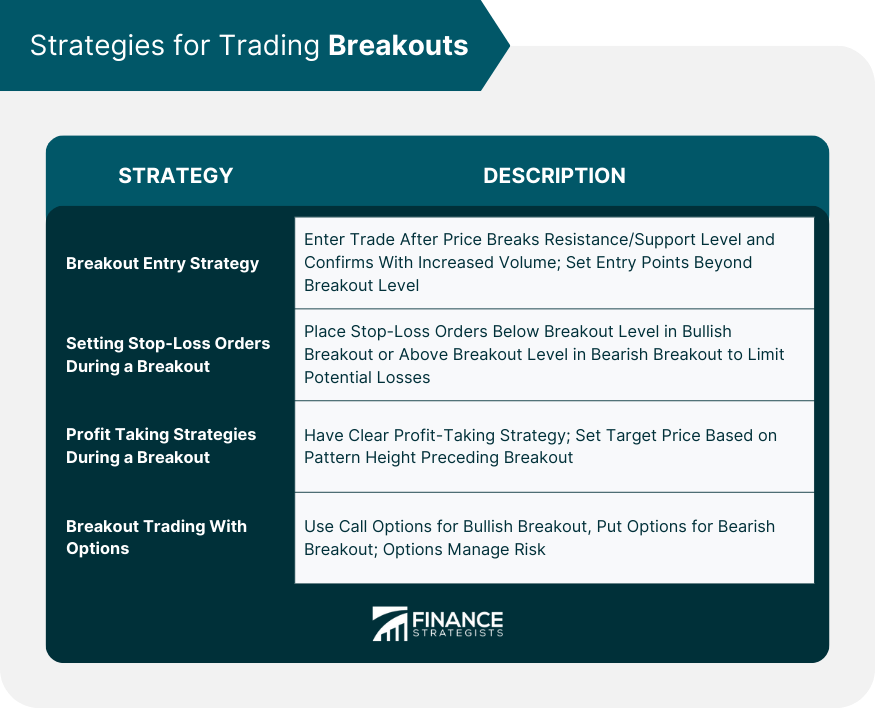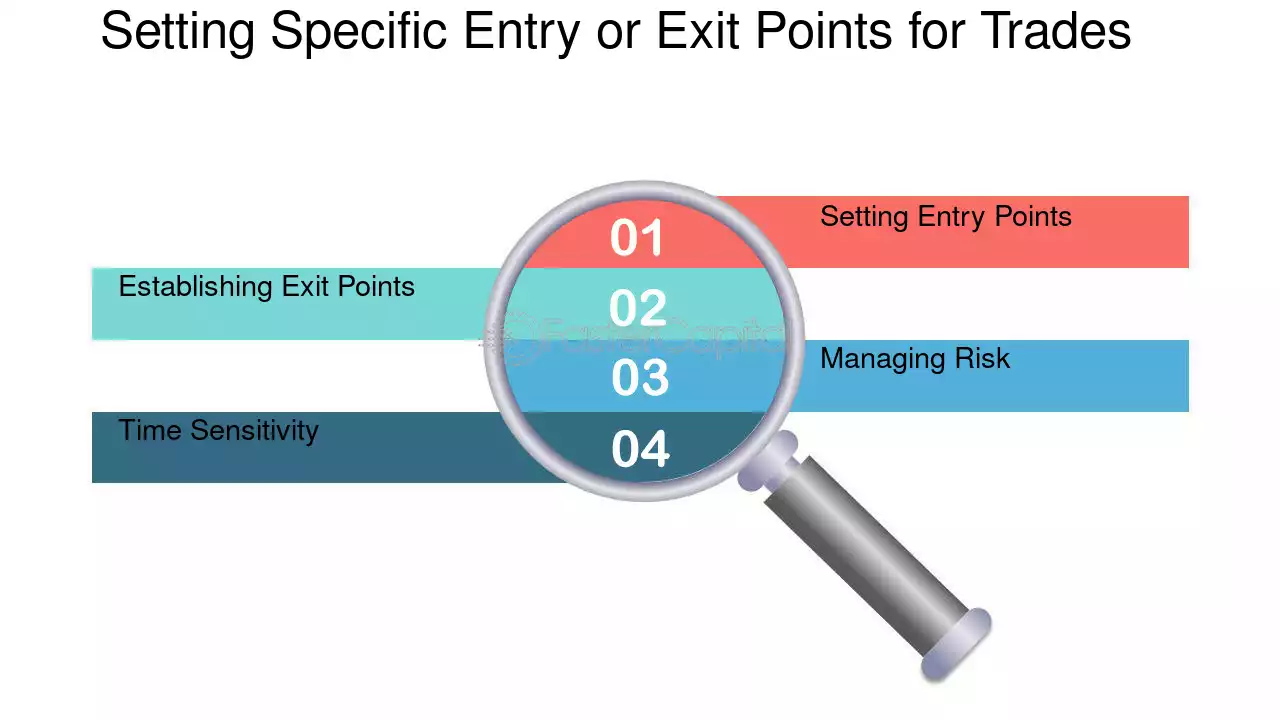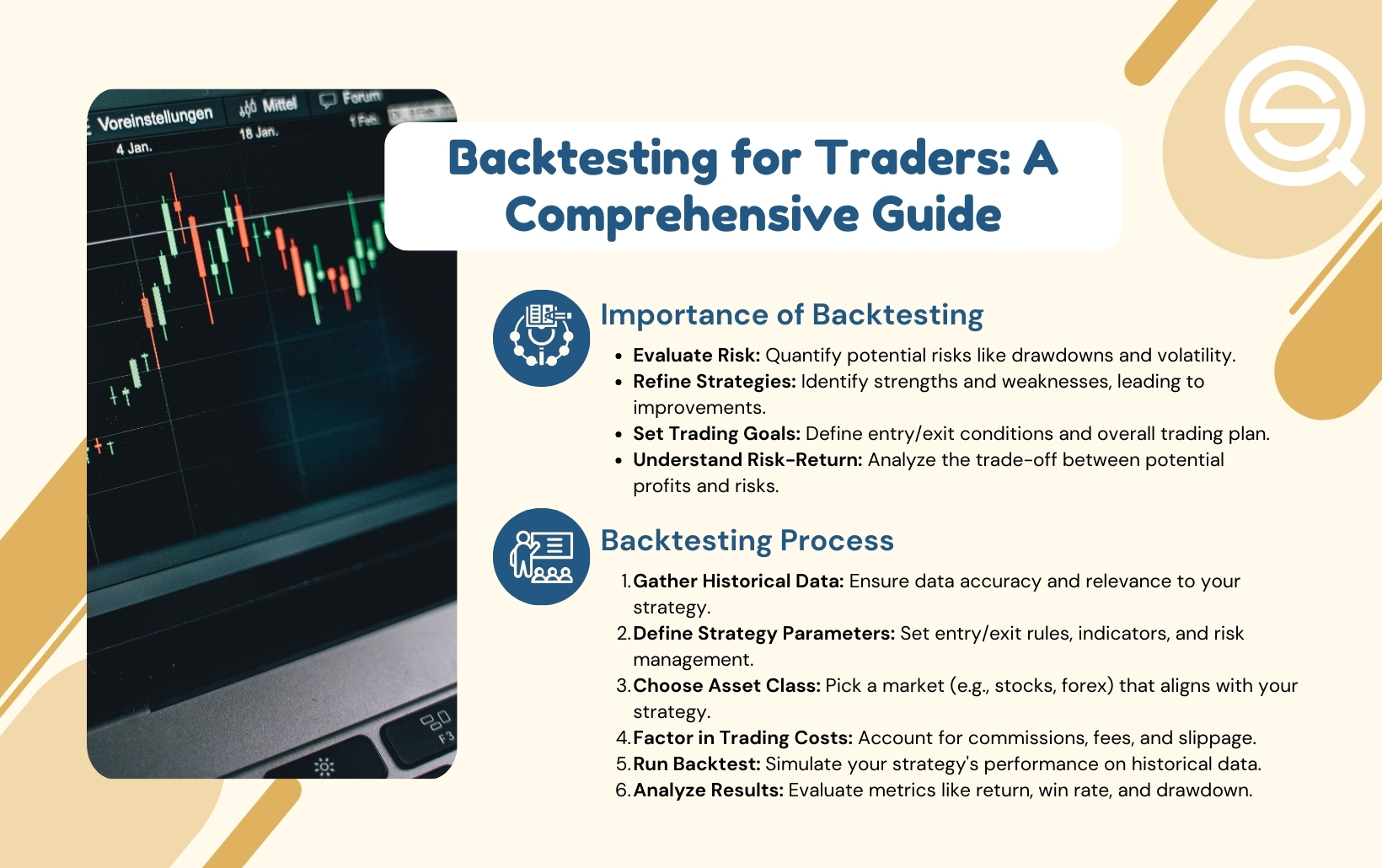Did you know that the average person spends six months of their life waiting for red lights to turn green? In trading, waiting for the right breakout can be just as important. This article dives into the essentials of setting entry and exit points in breakout trades, a critical strategy for maximizing profits. We’ll explore what breakout trades are and why they matter, how to identify breakout points, and the indicators that can help. Learn about the significance of volume, support and resistance levels, and effective strategies for stop-loss orders. We’ll also cover the impact of market conditions, the importance of backtesting, and tips for staying disciplined. Whether you’re aiming for quick day trading gains or navigating volatile markets, this guide from DayTradingBusiness will equip you with the knowledge to refine your entry and exit strategies effectively.
What are breakout trades and why are they important?
Breakout trades occur when the price of an asset moves beyond a defined support or resistance level with increased volume. They are important because they signal potential trends, allowing traders to capitalize on significant price movements. Setting entry points involves identifying these levels and waiting for a confirmed breakout, while exit points depend on profit targets or trailing stops to lock in gains. Effective entry and exit strategies in breakout trades can maximize profits and minimize losses.
How do I identify a breakout point in trading?
To identify a breakout point in trading, look for key resistance or support levels where price has previously struggled to move beyond. Monitor for increased volume as the price approaches these levels; a significant spike often signals a breakout. Use technical indicators like moving averages or Bollinger Bands to confirm momentum. Set entry points slightly above resistance for bullish breakouts or below support for bearish ones. Always have a stop-loss in place to manage risk effectively.
What indicators can help set entry points for breakout trades?
Key indicators for setting entry points in breakout trades include:
1. Volume: Look for increased trading volume as the price approaches a resistance level to confirm the breakout.
2. Price Action: Identify strong candlestick patterns, such as bullish engulfing or hammer patterns, near resistance.
3. Moving Averages: Use short-term moving averages crossing above long-term moving averages to signal potential breakouts.
4. Support and Resistance Levels: Set entry points just above key resistance levels, ideally with a slight buffer.
5. Bollinger Bands: Watch for price touching the upper band, indicating potential for a breakout.
6. Relative Strength Index (RSI): An RSI above 70 can suggest overbought conditions, signaling a breakout may occur soon.
Combine these indicators for a robust entry strategy in breakout trades.
How can I determine the best exit point for breakout trades?
To determine the best exit point for breakout trades, follow these steps:
1. Identify Key Resistance Levels: Look for previous highs or resistance levels where price has struggled to break through.
2. Use Technical Indicators: Consider using indicators like the Average True Range (ATR) to set a volatility-based exit point.
3. Set a Target Based on Risk-Reward Ratio: Aim for a risk-reward ratio of at least 1:2 or 1:3. Calculate your exit based on the distance from your entry point and your stop-loss.
4. Monitor Price Action: Watch for signs of reversal or weakness as the price approaches your target.
5. Trailing Stop Orders: Use trailing stops to lock in profits as the trade moves in your favor, adjusting the exit point dynamically.
6. Time Frame Consideration: Align your exit strategy with your trading time frame. Short-term traders may exit quicker than long-term holders.
By combining these techniques, you can effectively set exit points that maximize your breakout trade profits.
What is the role of volume in breakout trading?
Volume plays a crucial role in breakout trading by confirming the strength of a price movement. High volume during a breakout indicates strong buyer interest and increases the likelihood that the breakout will sustain. Conversely, low volume can signal a lack of commitment, suggesting the breakout may fail.
When setting entry points, look for breakouts accompanied by significant volume spikes, as this suggests momentum. For exit points, consider monitoring volume trends; if volume decreases after the breakout, it may be wise to take profits or tighten stops to protect gains.
How do support and resistance levels affect entry and exit points?
Support and resistance levels help traders identify ideal entry and exit points in breakout trades. When the price approaches a resistance level, traders may consider entering a short position if the price fails to break above it. Conversely, if the price breaks through resistance, it signals a potential entry point for a long position, anticipating further upward movement.
For exits, a trader might set a target near the next resistance level after a breakout, or use support levels to determine stop-loss placements, limiting losses if the trade goes against them. Understanding these levels enhances decision-making by providing clear benchmarks for potential price reversals or continuations.
What strategies can I use for setting stop-loss orders in breakouts?

For setting stop-loss orders in breakout trades, consider these strategies:
1. Use ATR: Set your stop-loss based on the Average True Range (ATR) to account for volatility. A common method is placing the stop-loss 1.5 to 2 times the ATR below the breakout point.
2. Support Levels: Identify nearby support levels. Place your stop-loss just below a key support level to minimize risk if the breakout fails.
3. Percentage Method: Set a fixed percentage loss, like 2-5% below your entry point, ensuring it aligns with your risk tolerance.
4. Trail Stops: Use trailing stops to lock in profits as the price moves in your favor. Adjust the stop-loss upward based on price action.
5. Chart Patterns: Analyze the chart for patterns (e.g., flags, triangles) and set your stop-loss just below the last swing low or the pattern’s support line.
6. Volume Confirmation: Ensure strong volume during the breakout. If the volume drops, consider moving your stop-loss closer to protect against a reversal.
7. Time-Based Stops: If the trade doesn’t move in your favor within a specific timeframe, exit the position to limit losses.
Implement these strategies to effectively manage risk in breakout trades.
What Are Effective Entry and Exit Points for Day Trading Breakout Strategies?
Day trading breakout strategies involve identifying key price levels where an asset is likely to surge. To set entry points, look for price action breaking above resistance or below support with increased volume. For exit points, consider using a trailing stop, a fixed profit target, or a support/resistance level to lock in gains.
Learn more about: What Are Day Trading Breakout Strategies?
How do I use chart patterns to find entry and exit points?
To use chart patterns for entry and exit points in breakout trades, follow these steps:
1. Identify Patterns: Look for classic patterns like triangles, flags, and head-and-shoulders. These indicate potential breakouts.
2. Set Entry Points: Enter a trade when the price breaks above resistance (for bullish patterns) or below support (for bearish patterns). Confirm the breakout with increased volume.
3. Determine Exit Points: Use the height of the pattern to set profit targets. For example, if a triangle has a height of $5, add that to the breakout point for your target.
4. Stop Loss Placement: Place stop-loss orders just below the breakout point for long trades or above for short trades to manage risk.
5. Monitor Market Conditions: Adjust your strategy based on market conditions and news that could impact price movement.
By following these steps, you can effectively use chart patterns to find strategic entry and exit points in your breakout trades.
What timeframes are best for breakout trading?
The best timeframes for breakout trading are typically 15-minute, 1-hour, and daily charts. Shorter timeframes like 5-minute can provide quick signals, while daily charts offer a broader perspective. Focus on the timeframe that aligns with your trading style—day traders often use shorter intervals, while swing traders may prefer hourly or daily charts. Always look for volume confirmation to validate breakouts.
How can I manage risk when setting entry and exit points?

To manage risk when setting entry and exit points in breakout trades, follow these steps:
1. Use Stop-Loss Orders: Place stop-loss orders just below support levels for long positions and above resistance for short positions to limit potential losses.
2. Identify Volatility: Measure the asset’s volatility using indicators like the Average True Range (ATR) to set appropriate distance for your stop-loss and take-profit levels.
3. Position Sizing: Determine your position size based on your risk tolerance, ensuring you don’t risk more than a small percentage of your trading capital on a single trade.
4. Set Realistic Targets: Establish clear profit targets based on technical analysis, such as previous highs or lows, to take profits when the market moves in your favor.
5. Monitor Market Conditions: Stay aware of news and events that could impact the asset, adjusting your entry and exit points accordingly.
6. Review and Adjust: Continuously analyze your trades to refine your strategy, learning from both successful and unsuccessful trades.
Implementing these strategies helps mitigate risk while maximizing potential rewards in breakout trades.
Should I use trailing stops for breakout trades?
Yes, using trailing stops for breakout trades can be beneficial. They allow you to secure profits as the trade moves in your favor while giving you the flexibility to ride potential trends. Set your trailing stop based on volatility or a percentage of your entry price to adjust as the price rises. This strategy helps protect against sudden reversals while maximizing gains.
How do market conditions influence my entry and exit strategy?
Market conditions dictate your entry and exit strategy by affecting volatility, liquidity, and trend strength. In a bullish market, consider entering on breakouts with stronger momentum and setting tighter stop-loss orders. In a bearish market, wait for confirmation before entering, and be cautious with your profit targets. Use support and resistance levels to determine exit points, adjusting them based on current market sentiment. Always be ready to adapt your strategy as conditions change, ensuring you manage risks effectively.
What are common mistakes to avoid when setting breakout levels?
Common mistakes to avoid when setting breakout levels include:
1. Ignoring Market Context: Don't set breakout levels without considering overall market trends and conditions.
2. Focusing Solely on Historical Levels: Relying only on past price levels can lead to missed opportunities. Always account for current volatility.
3. Setting Levels Too Tight: Avoid placing entry points too close to the breakout price; this can lead to premature exits due to normal price fluctuations.
4. Neglecting Volume Analysis: Failing to confirm breakouts with volume can result in false signals. Ensure that volume supports the breakout.
5. Not Having a Clear Exit Strategy: Don’t just focus on entry points; have defined exit levels to secure profits or cut losses.
6. Ignoring News Events: Major news can affect breakouts. Stay aware of scheduled announcements that could impact price movement.
7. Overtrading: Avoid jumping into too many breakouts at once. Focus on quality setups rather than quantity.
8. Lack of Risk Management: Always set stop-loss orders to protect against unexpected reversals.
How can I adjust my strategy for volatile markets?
To adjust your strategy for volatile markets when setting entry and exit points in breakout trades, focus on these key steps:
1. Wider Stop Losses: Increase your stop loss distance to accommodate price swings, reducing the chance of getting stopped out prematurely.
2. Use Technical Indicators: Incorporate volatility indicators like Bollinger Bands or Average True Range (ATR) to determine optimal entry and exit points based on current market conditions.
3. Scale In/Out: Instead of committing your entire position at once, consider scaling in on entry and scaling out at exit to manage risk better.
4. Tighter Profit Targets: In volatile conditions, set more conservative profit targets to lock in gains before reversals occur.
5. Monitor News and Events: Stay updated on economic events or news that may impact volatility, adjusting your entries and exits accordingly.
6. Backtest Your Strategy: Use historical data to test how your strategy performs in different volatility scenarios, refining your approach based on results.
Implementing these adjustments can help you navigate volatile markets more effectively in your breakout trades.
What role does backtesting play in setting entry and exit points?

Backtesting helps traders analyze historical data to determine effective entry and exit points for breakout trades. By simulating trades based on past price movements, traders can identify which strategies yielded the best results. This process allows for refining criteria, adjusting stop-loss levels, and confirming profit targets. Ultimately, backtesting provides confidence in the chosen strategy, ensuring decisions are data-driven rather than purely instinctual.
How can I stay disciplined with my breakout trading plan?
To stay disciplined with your breakout trading plan, first, clearly define your entry and exit points based on technical analysis. Stick to your plan by setting strict stop-loss orders to manage risk. Keep a trading journal to track your trades and review your decisions regularly. Limit distractions during trading hours, and avoid impulsive decisions by following your strategy strictly. Lastly, regularly assess your performance and adjust your plan as needed, but don’t deviate from your core rules impulsively.
Learn about How to Stay Disciplined in Futures Day Trading
Conclusion about How to Set Entry and Exit Points in Breakout Trades
In conclusion, mastering entry and exit points in breakout trades is crucial for successful trading. By understanding key concepts such as breakout identification, volume analysis, and support and resistance levels, traders can effectively set their strategies. Utilizing indicators, managing risk, and avoiding common mistakes will enhance your trading performance. Remember, consistency and discipline are essential for executing your plan effectively. For more in-depth insights and support on breakout trading strategies, DayTradingBusiness is here to help you navigate the complexities of day trading.